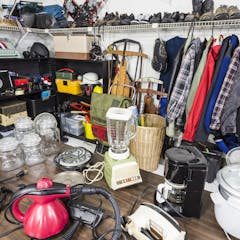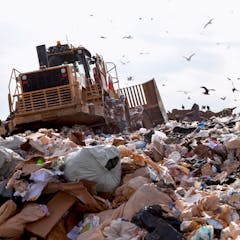
Articles on Circular economy
Displaying 61 - 80 of 109 articles

Lockdown has exposed real problems with the circular economy which urgently need to be addressed.

Taxes designed to encourage a green transition can instead penalise smaller businesses and ensure they’re left behind.

Burning non-recyclable waste to generate energy sounds like a great idea – but incineration plants need an ongoing waste stream to be viable, which perpetuates the make-use-dispose mentality.

Old buildings aren’t just waste – the materials can be reused to create the cities of the future.

Europe recycles 70% of its steel, but much is exported, turning what should be a circular process into a linear one. Instead, materials need to be circularity-ready the moment they’re manufactured.

Innovation in digital technology is accelerating – it has massive untapped potential for tackling the climate crisis.

As the population of the world’s cities grows, so too does resource and energy use as well as waste generation. We can combat these issues with a circular economy that uses nature as a template.

Some circular economy business models are based on case studies, others are more theoretical, yet it’s hard to get a comprehensive overview. Why? Simple: Because the opportunities are nearly endless.

In a growing world with an increasing population with ever-greater needs, it is high time to find a balanced solution for our activities. Nature provides us with the template.

The world is on the brink of creating irreversible damage to the environment if better policy isn’t rolled out. Read the findings of the UN report.

China, which once processed much of the world’s scrap, has slashed imports of “foreign garbage.” What can the US do to step up recycling at home?

Too much recyclable packaging is still finding its way into landfill - and plastic is the biggest culprit, with two-thirds going unrecovered, according to a new analysis.

Across Africa less than 10% of the population is connected to a sewer system. But the waste could be used elsewhere.

With all those blue recycling bins around you might think we are experts at recycling plastics. The truth is, that though many plastic items can be recycled, very few are. So what’s the solution?

Recycling on a large scale is a Bronze Age invention.

As 2019 dawns, a worldwide circular economy could be created through international trade and trade agreements like the one that could be forged between Canada and the U.K., post-Brexit.

The internet makes it easier for discarded stuff to land in someone else’s home instead of the dump.

This year’s recycling crisis has prompted the federal government to pledge a move towards an economy in which materials are kept in use for as long as possible. But it still has a long way to go.

Trump’s plan to slap $200 billion more in tariffs on Chinese goods is premised on yesterday’s waste-fueled economy. Tomorrow’s economy is ‘circular.’

Questions about supplies of rare-earth elements, crucial in high-tech devices, pushed researchers to look to industrial waste for new sources of the key materials.
